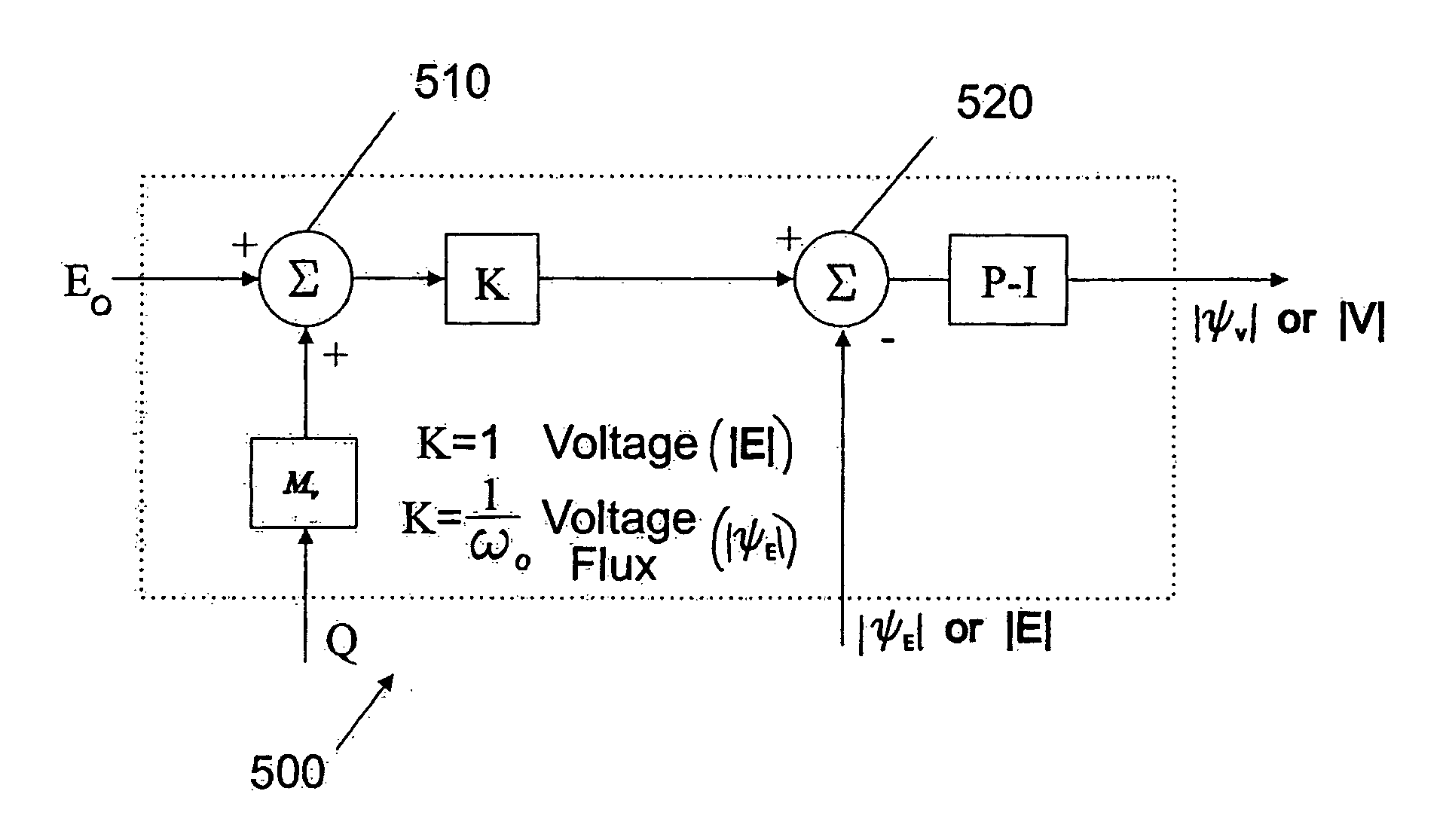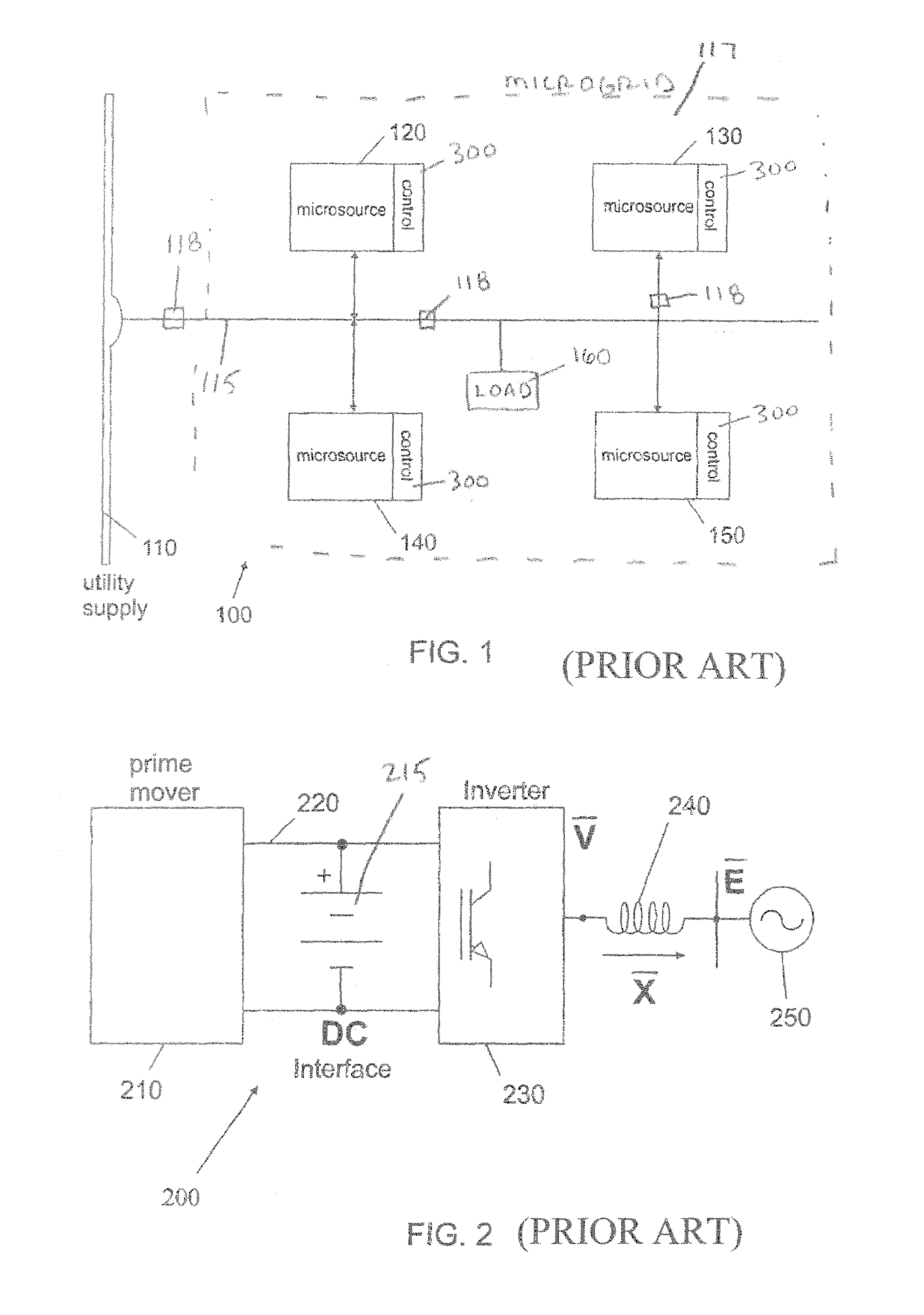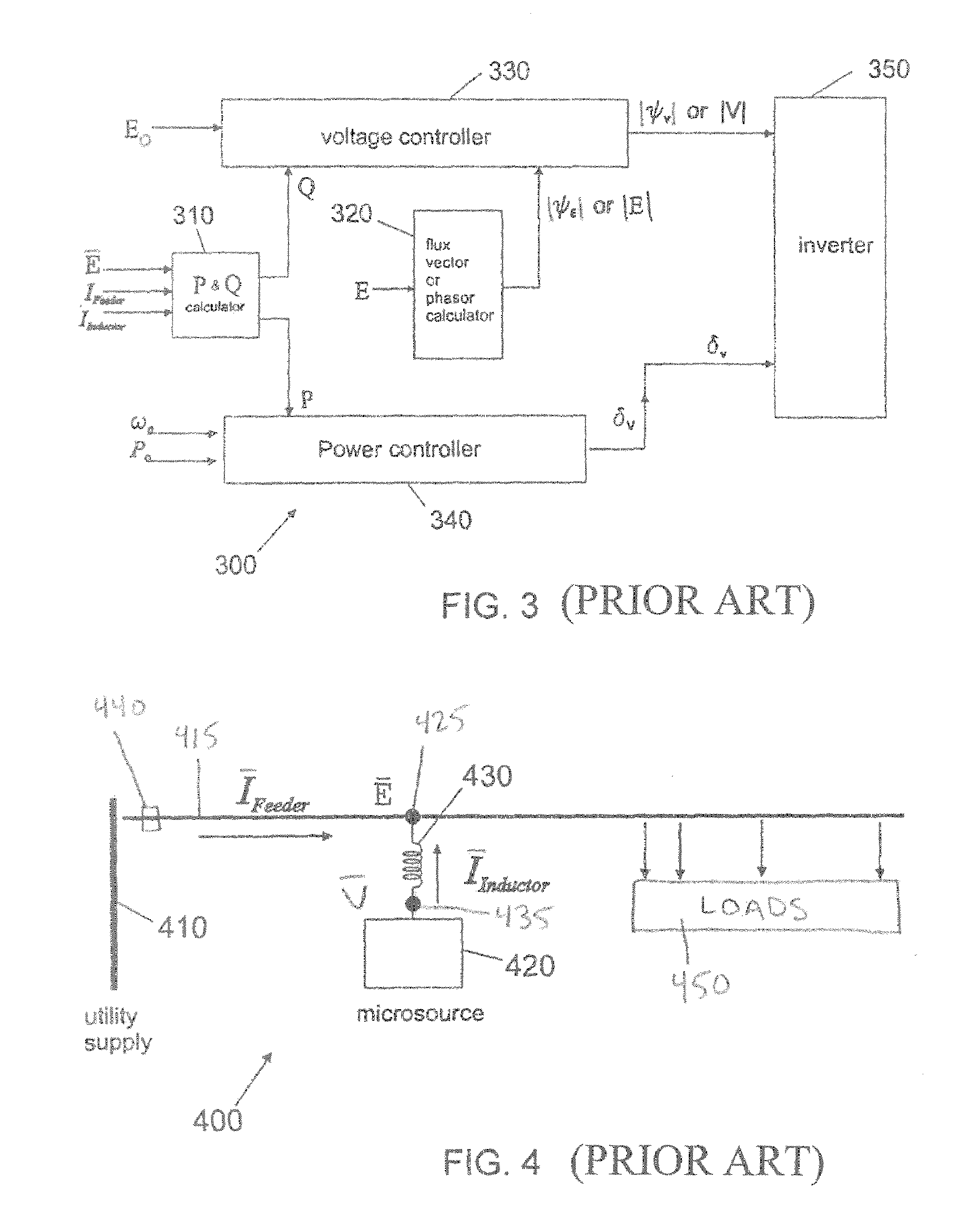Control of small distributed energy resources
a distributed energy resource and small technology, applied in the direction of emergency power supply arrangements, transportation and packaging, dc network circuit arrangements, etc., can solve the problems of large-scale power interruptions, life-threatening consequences of hospital power interruptions, and aging transmission and distribution systems that remain subject to occasional failures, etc., to increase the unit output power
- Summary
- Abstract
- Description
- Claims
- Application Information
AI Technical Summary
Problems solved by technology
Method used
Image
Examples
Embodiment Construction
[0056]Referring to the figures, FIG. 1 is a diagram of an exemplary distributed energy resource system. Such an exemplary system is described, for example, in U.S. Patent Application Publication No. US 2004 / 0051387, the contents of which are incorporated by reference. In the event of any conflict between the disclosure of the present application and the disclosure of U.S. Patent Application Publication No. US 2004 / 0051387, the disclosure of the present application controls.
[0057]The present invention relates to a system for and method of control of small distributed energy resources. This control can be implemented by changing the phase of the output from the microsource as a function of time, to vary the instantaneous frequency and power of that output.
[0058]The invention relates more particularly to novel control schemes for controlling the instantaneous frequency and power from one or more microsources in ways that tend to ensure that the microsources stay within their normal ope...
PUM
 Login to View More
Login to View More Abstract
Description
Claims
Application Information
 Login to View More
Login to View More - R&D
- Intellectual Property
- Life Sciences
- Materials
- Tech Scout
- Unparalleled Data Quality
- Higher Quality Content
- 60% Fewer Hallucinations
Browse by: Latest US Patents, China's latest patents, Technical Efficacy Thesaurus, Application Domain, Technology Topic, Popular Technical Reports.
© 2025 PatSnap. All rights reserved.Legal|Privacy policy|Modern Slavery Act Transparency Statement|Sitemap|About US| Contact US: help@patsnap.com



